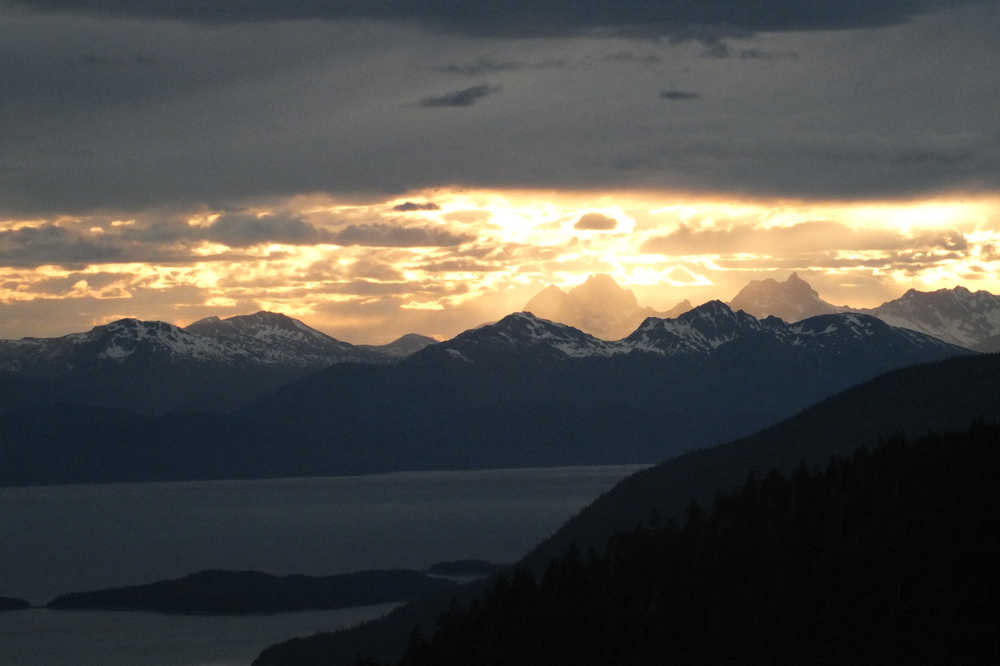The other day I trudged along Grandchild Peak ridge on an outing for a college backpacking class I teach. During a break, while munching granola bars and staring at peaks guarding the icefield, a number of students recited the John Muir quote, “The mountains are calling and I must go.” One even had the saying printed on her shirt.
The winds were still but in the far distance a northerly gale stirred Southern Lynn Canal to frothing life. I studied Sentinel and Benjamin islands and the white froth of waves crashing on their rocky shores. Vanderbilt Reef, and the remains of the Princess Sophia, which sank there 98 years ago, was just a few miles away hidden beneath the chaotic ocean.
The Sophia grounded on Vanderbilt Reef, in southern Lynn Canal, at 2 a.m. Oct. 24, 1918. The few surviving photographs show an ocean tormented by a vicious winter storm. Numerous fishing boats responded to the ship’s distress calls.
Despite the boats’ offers of help, Captain Leonard Locke decided not to try to offload the estimated 353 passengers and crew. He likely believed an attempt in such heavy seas would result in deaths. He waited and hoped the storm would calm.
The rising tide and winds tore the ship off the reef around 5 p.m. Oct. 25. The Sophia went down so rapidly there was no time to evacuate into lifeboats.
All were lost.
Ninety-eight years later, the students and I watched mountain goats as we carefully trudged along a small game trail. A merlin and a magpie collided with each other before going their own ways. A flock of snow buntings, visible for just a moment, flew over the ridge and down into the valley. A short while later we were at the end of the ridge, standing above a glacier. The upper ramparts of Herbert Glacier cascaded down and Death Valley yawned bleak and enticing.
We made it back to our camp at treeline in the twilight. We built a fire, cooked dinner and joked.
It wasn’t long before people began telling ghost stories. Some students got edgy. A few were convinced there was bear outside of the fire light — a possibility, but what they described hearing sounded more like a startled sooty grouse taking flight. Some thought they heard voices. We watched an odd light snake through the woods that I told them it was a jet on its way to land at the airport.
I figured we ought to hold off telling alien abduction stories until the following night.
Soon, it began to snow.
I went to bed thinking of Walter and Frances Harper, young newlyweds who were aboard the Sophia.
Walter, half Athabascan, the son of a Klondike King and the protégé of Episcopalian priest and adventurer Hudson Stuck, was the first person to stand atop Denali.
The night was silent and peaceful, but I made the mistake of imagining the crashing of waves, the howling of the storm and the hopelessness and terror as the Sophia sunk into the black roiling ocean.
In the morning Mount Stroller White was shrouded in clouds and the sky was gray. The gale plaguing Lynn Canal had died. No waves crashed against Benjamin and Sentinel islands. The ocean stretched dark and almost calm above Vanderbilt Reef.
In accordance with Stuck’s wishes, Walter and Frances were buried side by side in Juneau’s Evergreen Cemetery. The taiga was frozen in, and there was no reasonable way to transport or bury bodies north.
Next Tuesday, Oct. 25, there will be a commemoration held at noon at their graves. All who’d like to give their regards are welcome. Remember the Sophia the next time you look out on Lynn Canal.
Or, the next time the mountains call — as Denali once called Harper — listen.
• Bjorn Dihle is a Juneau writer. His first book, “Haunted Inside Passage,” will be released May 2, 2017. He can be reached at bjorndihle@yahoo.com.

